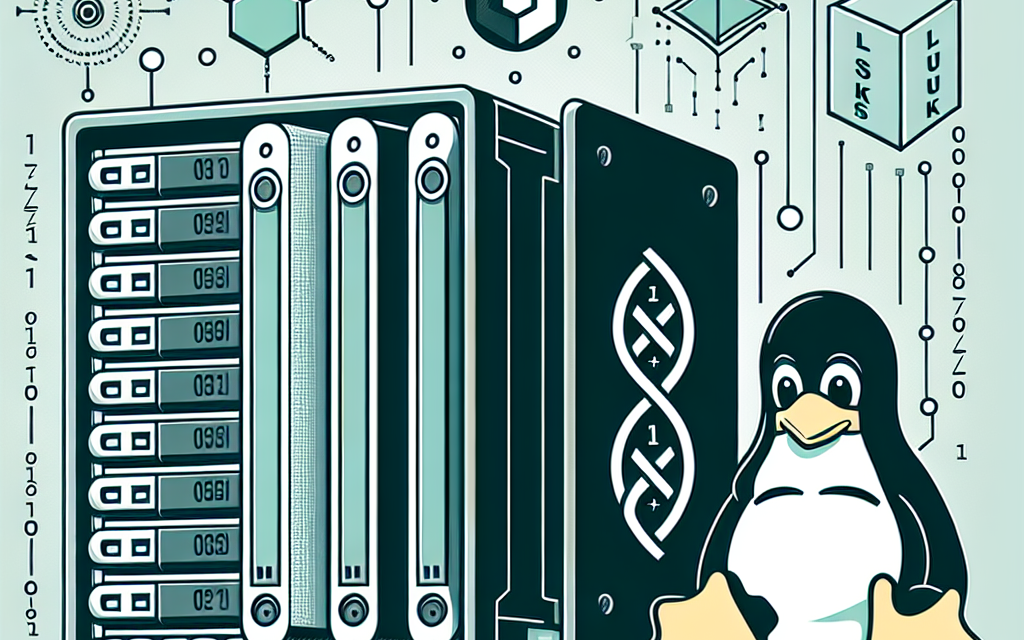In today’s digital landscape, data security remains a top priority for organizations. With increasing cyber threats, ensuring your data is encrypted is crucial, especially in environments where RAID arrays are employed for redundancy and performance. This article will guide you through implementing LUKS (Linux Unified Key Setup) to encrypt a RAID array on Linux servers, providing a robust solution for data protection.
What is LUKS?
LUKS is the standard for Linux disk encryption. It provides a secure way to encrypt block devices, ensuring that data remains protected from unauthorized access. LUKS manages keys and secures the volume with a passphrase, making it user-friendly while maintaining strong security.
RAID Overview
RAID (Redundant Array of Independent Disks) combines multiple physical disks into a single logical unit for redundancy, performance, or both. However, the data stored on a RAID array is vulnerable to unauthorized access. Encrypting the entire RAID array protects sensitive data, ensuring it remains unreadable without the correct encryption keys.
Pre-requisites
Before we begin, ensure you have the following:
-
Linux Server: A running Linux distribution (CentOS, Ubuntu, Debian, etc.).
-
RAID Setup: A configured RAID array (RAID 1, RAID 5, etc. depending on your needs).
-
LUKS tools: Ensure you have the necessary tools installed. This can typically be done via your package manager:
bash
sudo apt update
sudo apt install cryptsetup -
Backup: Always back up your data. Encrypting a RAID array can risk data loss if not done correctly.
Step-by-step Implementation
Step 1: Create the RAID Array
If you haven’t created a RAID array yet, you can do so using mdadm. Here’s an example command for creating a RAID 1 array.
bash
sudo mdadm –create –verbose /dev/md0 –level=1 –raid-devices=2 /dev/sda1 /dev/sdb1
Ensure that /dev/sda1 and /dev/sdb1 are the partitions you want to use.
Step 2: Set Up LUKS Encryption
Now we will encrypt the newly created RAID array using LUKS.
-
Format with LUKS:
bash
sudo cryptsetup luksFormat /dev/md0You will be prompted to confirm the operation and set a passphrase. Make sure to remember this passphrase, as it will be required to access your data.
-
Open the LUKS Volume:
Next, we need to open the encrypted volume:
bash
sudo cryptsetup luksOpen /dev/md0 encrypted_raidThis creates a mapped device at
/dev/mapper/encrypted_raid.
Step 3: Format the LUKS Volume
Now that the RAID array is opened, format it with a filesystem of your choice, commonly ext4:
bash
sudo mkfs.ext4 /dev/mapper/encrypted_raid
Step 4: Mount the Encrypted RAID Array
Create a mount point and mount the newly formatted encrypted RAID array:
bash
sudo mkdir /mnt/encrypted_raid
sudo mount /dev/mapper/encrypted_raid /mnt/encrypted_raid
To verify the mount, run:
bash
df -h
Step 5: Automating the Decryption Process
To ensure seamless access upon system reboots, you may want to configure /etc/crypttab and /etc/fstab.
-
Edit crypttab:
Open
/etc/crypttabto add your encrypted RAID array:bash
sudo nano /etc/crypttabAdd the following line:
encrypted_raid /dev/md0 none luks
-
Edit fstab:
Open
/etc/fstaband add:bash
sudo nano /etc/fstabAdd the following line:
/dev/mapper/encrypted_raid /mnt/encrypted_raid ext4 defaults 0 2
Step 6: Update Initramfs
Run the following command to update your initramfs, ensuring the encrypted RAID is decrypted during boot:
bash
sudo update-initramfs -u
Conclusion
Congratulations! You have successfully implemented LUKS for secure RAID array encryption on your Linux server. This setup enhances data security significantly, protecting sensitive information from unauthorized access.
Best Practices
- Regular Backups: Always have backups of critical data.
- Use Strong Passphrases: Ensure that the passphrase used for LUKS is complex and secure.
- Monitor for Security Updates: Stay updated with the latest packages and security fixes for your system.
By following these steps, your RAID array is now well-protected against unauthorized access, and you can ensure the integrity and confidentiality of your data.





